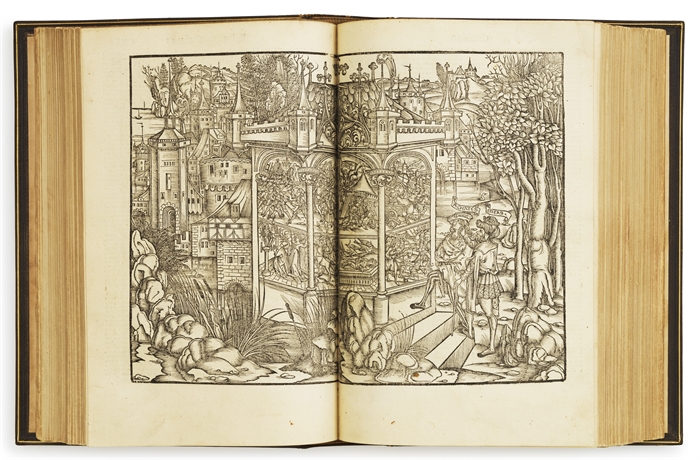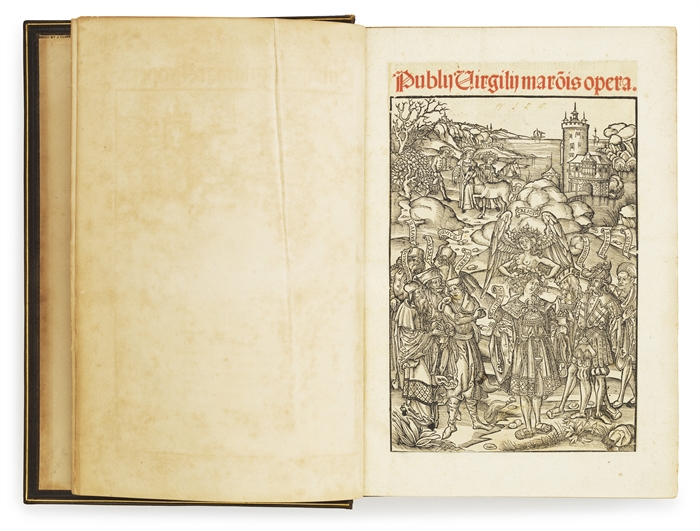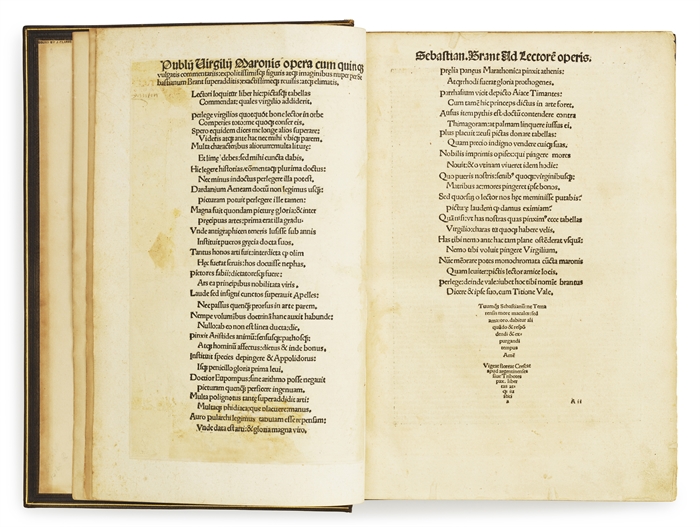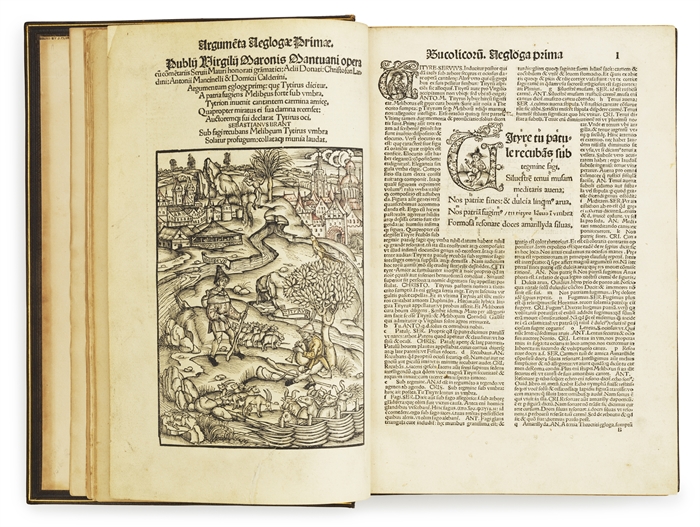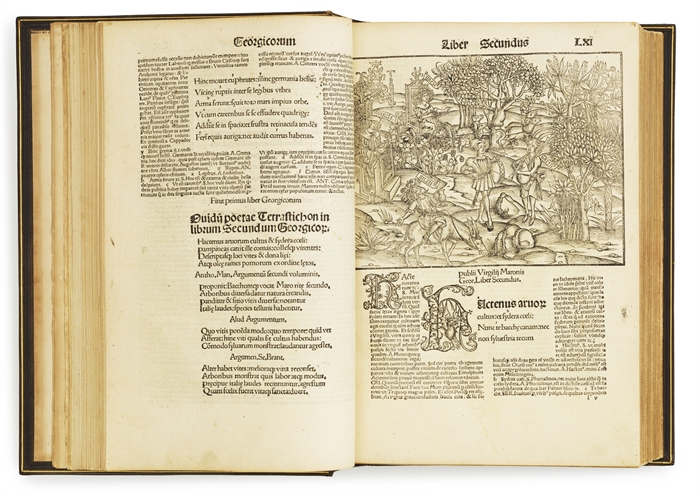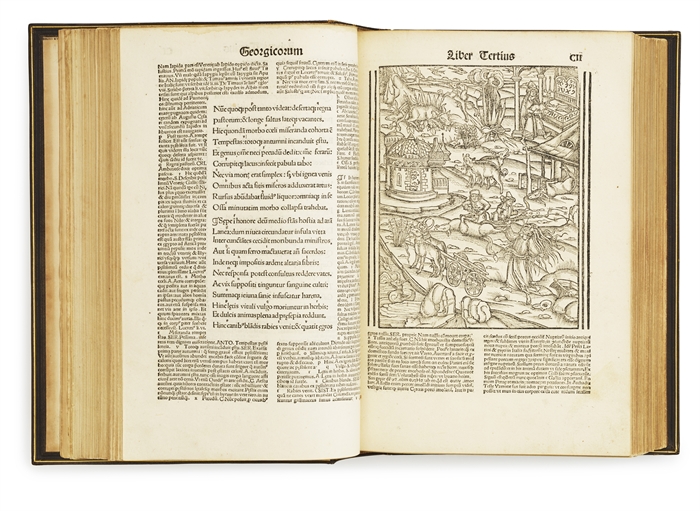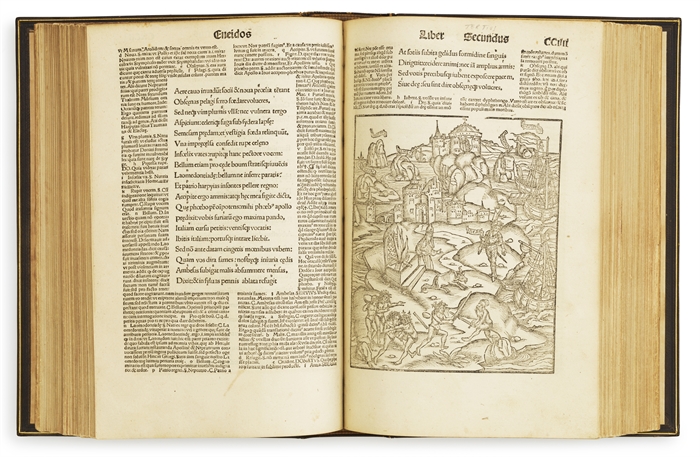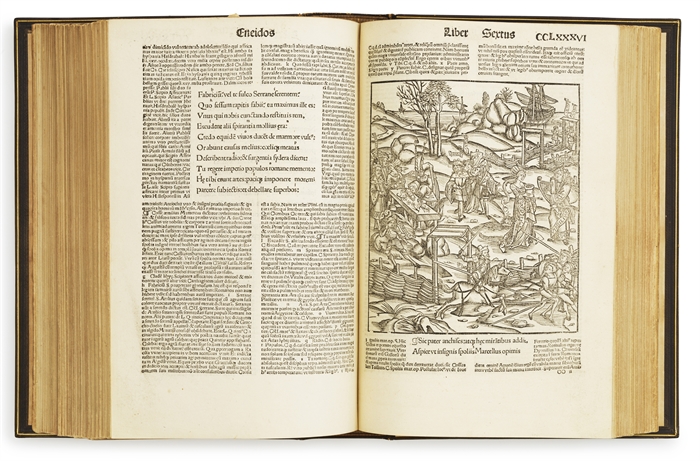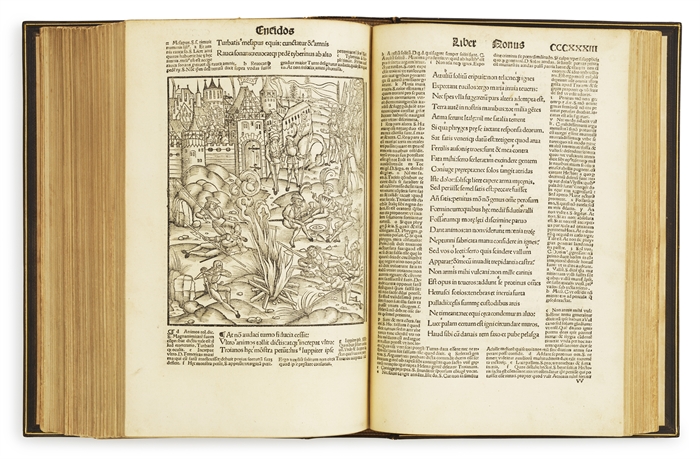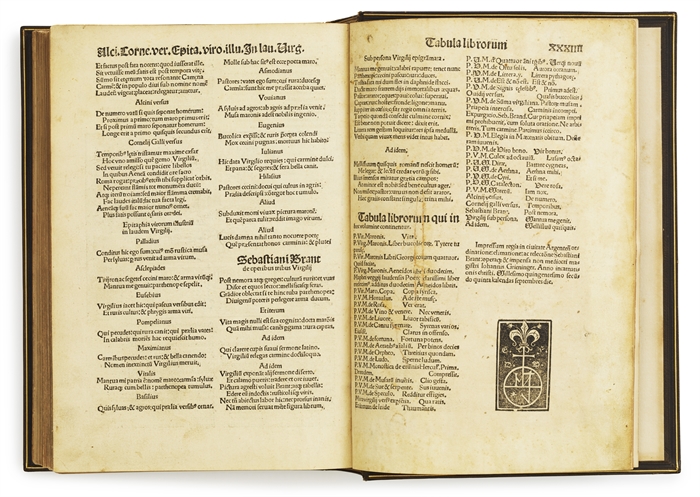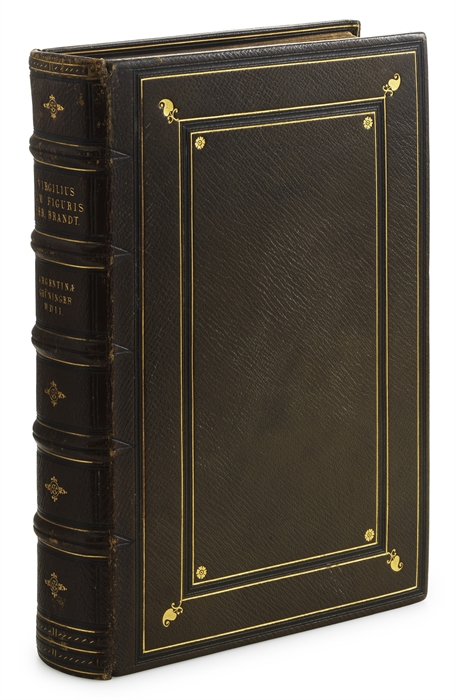THE FIRST ILLUSTRATED EDITION OF VERGIL
PUBLIUS VERGILIUS MARO.
Opera cum quinque vulgatis commentariis expolitissimisque figuris atque imaginibus nuper per Sebastianum Brant superadditis exactissimeque reuisis atque elimatis.
Strasbourg, Johannes Grüninger, 28 August 1502.
Folio (298 x 204 mm). Bound in an exquisite later (c. 1850) brown full morocco binding by John Clarke with gilt title and five raised bands to spine. Gilt and blindstamped lines to spine. Boards with gilt and blindstamped lines and gilt fleurons to corners. Edges and inside of boards with gilt and blindstamped lines. All edges gilt. Kept in a marbled slipcase. Slight wear to capitals and outer hinges. Armorial exlibris pasted to inside of front board. Woodcut title page remargined. Several underlinings and interlinear and marginal annotations in at least two different contemporary (or near-contemporary) hands. A6 and colophon leaf mounted (no loss). Four insignificant wormholes in lower margin, not affecting the text, from B1 through E2. A few scattered brownspots, otherwise a clean copy. Text of varying length surrounded by 72 lines of commentary. With all 214 woodcut illustrations as well as numerous woodcut initials. 449 leaves: A6 B-S8 (H +1) T-V10 x-z8 AA-HH8 II6 KK-VV8 XX6 YY-ZZ8 a-f8 aa-cc8 dd10.
An excellent, complete copy of the marvellous Brant-Grüninger edition of the works of Vergil, being the first illustrated printed edition of Vergil, and altogether one of the most magnificent illustrated books in the history of printing. Arguably the most outstanding illustrated edition of any work of Classical literature, the Brant-Grüninger Vergil had a tremendous impact on sixteenth-century illustration art: "Because of the wealth and erudition of its illustrations, as well as the fact that it was the first in its field, the 1502 Vergil had a considerable influence on almost everyone who wished to illustrate the same subject during the following half century." (T.K. Rabb, Sebastian Brant and the First Illustrated Edition of Vergil, 1960, p. 196) Best known for his satirical work 'Das Narrenschiff' (1494), Sebastian Brant (1457/58 - 1521) was one of the greatest German humanists of the fifteenth (and early sixteenth) century. According to a charming epigram at the end of the book, the purpose of the illustrations was to assist 'unlearned and rustic readers' (lat. 'indoctis rusticolisque viris') in understanding the often complex content of Vergil's poetry. Although Brant indicates in the introductory poem that these were created by himself (lat. 'has nostras quas pinximus ecce tabellas'), the general assumption is that only provisional design sketches can be attributed to him. In any case, the illustrations, though in many respects anachronistic, reveal his thorough knowledge of Vergil and Vergilian scholarship. Along with the text of Vergil, including his spurious writings, the present edition contains five ancient and Renaissance Vergilian commentaries, those of Servius, Donatus, Cristoforo Landino, Antonio Mancinelli and Domizio Calderini. Adams V-457; Brunet V 1277; Dibdin II 542.
Order-nr.: 62086

